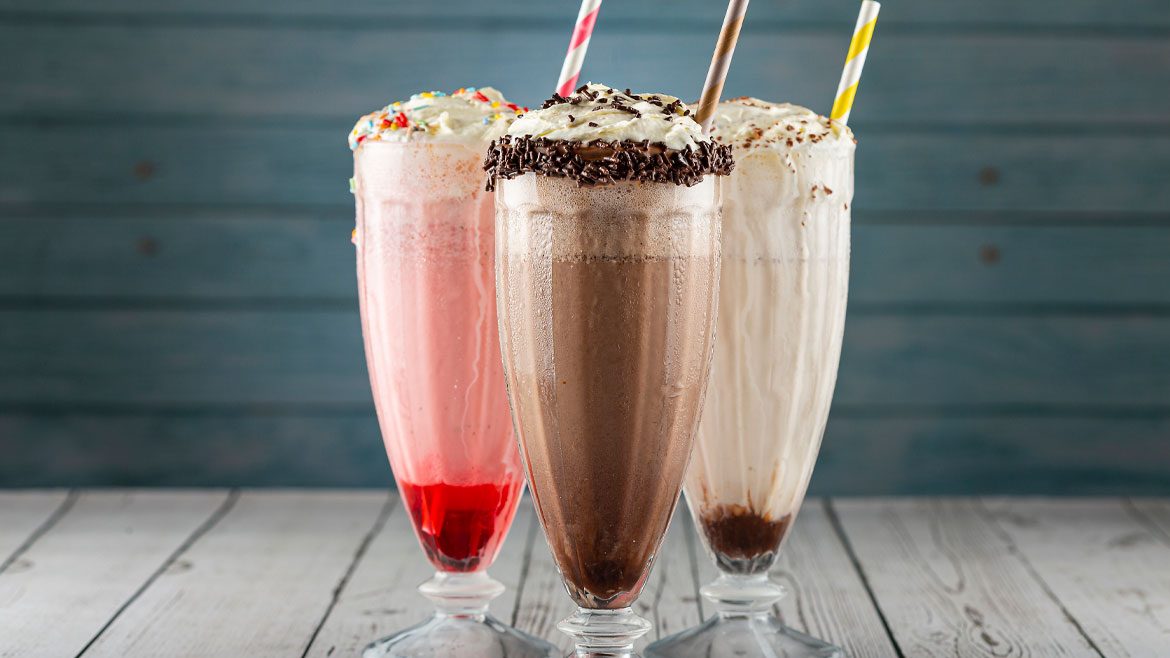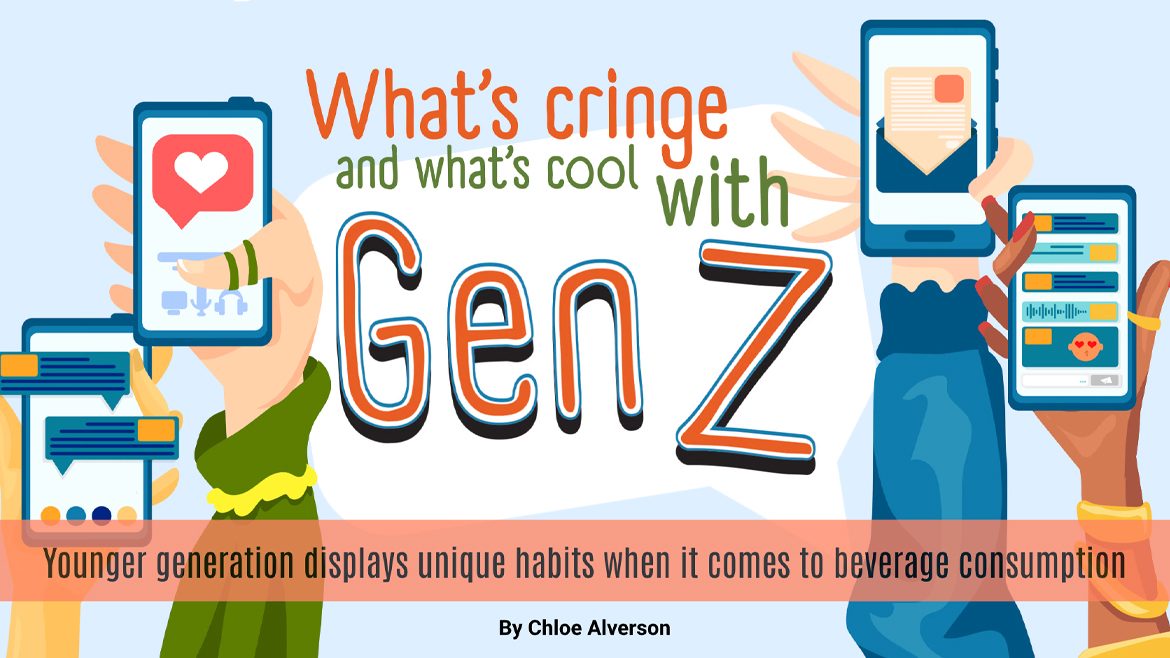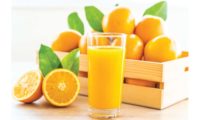At First Sight
At First Sight
By JENNIFER ZEGLER
Beverage colors provide the all-important first
impression
A virtual rainbow of
colors populates beverage aisles. From classic cola shades to brightly
colored kid concoctions, beverage colors tempt consumers to drink up. The
hue chosen by a company is an important factor as it not only hints at the
flavor, but also engages senses and emotions before a sip is even taken.
“Colors help beverages by making them more
visually appealing and they help identify the appearance of the beverage
with the flavor,” says Jason Armao, director of colors and special
ingredients for Wild Flavors, Cincinnati. “In addition, colors can be
used to stimulate a customer to purchase. For example, a beverage marketed
toward children or teens may be brightly colored, while a beverage marketed
toward adult women may be soft and natural in appearance.”
With a multitude of beverages competing for appeal,
the beverage’s color helps to make an impact on consumers. Though
many consumers are looking for more from their beverages, such as an energy
boost or antioxidant benefits, colors help to distinguish one product or
flavor from another.
“Colors take an important part in the emotional
benefits brought by a product,” says Nathalie Pauleau, color engineer
with the European branch of David Michael & Co. in France. “In
fact, the consumer interest for a beverage depends on the functional
benefit for one part and on the emotional benefits for one other part. The
more the emotional benefit corresponds to the consumer’s feelings and
needs, the more the consumer is attracted and interested by the
product.”
It’s only natural
As consumer interest in natural foods continues to
increase, the demand for natural colors has as well. Natural colors have
been around for many years, but recent technology has made them more stable
and easily available. Fruits and vegetables are the main source for natural
colors, which are most often in pinks, magentas and red shades.
“There are a lot of studies that consider the
use of synthetic colors not very good for health because of allergic
reactions,” Pauleau says. “In this way, some producers of
beverages try to use natural colors instead of synthetic ones, in
particular beverages for young people and dietetic beverages.”
Pauleau’s company, David Michael has a large
range of natural colors that protect pigments from oxidative degradation
and have better stability. The company also developed a range of natural
reds that remain stable in ascorbic acid, a common ingredient in soft
drinks, including Strawberry Red, Red Fruit and Cherry shades. In addition,
the company manufactures a range of fun colors for use in alcohol and other
novelty drinks to add interest to the product, including its newest Cotton
Candy shade.
Consumer label reading also is feeding the need for
more natural colors, explains Marty Gil, technical application specialist
for GNT USA, Tarrytown, N.Y. “The
consumer is driving the need for cleaner labels as the public and the
consumer is becoming more educated about the ingredients that are used in
the finished product. Natural and organic retail outlets, such as
Whole Foods, are one of the factors driving this change in consumer
education and purchasing choices.”
Gil explains that with any
ingredient factors such as light, heat and exposure to oxygen can play a
role in colorant stability over time. GNT USA’s fruit and
vegetable-derived Exberry line of colors provide coloring solutions with a
shelf life that can outlast that of its application, he says.
“Most of our business is natural; that’s
our expertise,” explains Jeff Greaves, president of Food Ingredient
Solutions, Blauvelt, N.Y. “We do application work through standard
breeding to create new colors. The heyday of natural colors was a few years
ago with Snapple and Mistic, but now with
Vitaminwater, companies are interested more in whole food color. Our juice
concentrates help go a little bit in the direction of whole food
color.”
Food Ingredient Solutions has many natural colors,
including the popular and functional beta-carotene. The company also has
filed a petition with the FDA for the first natural green color, derived
from chlorophyll, Greaves reports. Also new is its red radish juice color
that is similar in shade to synthetic Red 40. Interestingly, the source of
the color has proved to be a tough sell with some marketers.
“Our vegetable-based colors, such as radish and
cabbage, are stable and work beautifully, but some marketing departments
don’t want to put [vegetable colors] on the label,” Greaves
says. “That’s where our elderberry colors come in because they
are comparable to synthetic, allow for a fruit claim and provide the kind
of stability that you could get [with
synthetic].”
The American-grown elderberry color provides purple
tones that were previously derived from red cabbage or carmine, which can
be an allergen. Another advantage is the fruit’s functional benefits;
elderberry has long been revered for aiding vision and having antioxidants.
Natural colors are playing a large part in Wild
Flavor’s new exotic flavor beverage
concepts. Its concepts are following trends in global fruit and flavor
profiles that are inspired by world cuisine. The company is using natural
colors indicative of the original beverage recipes for ready-to-drink,
easy-to-manufacture concepts, Armao explains.
Cola colors are the main focus for D.D. Williamson,
though the Louisville, Ky., company is gaining natural appeal through its
affiliated companies. In addition to the acquisition of Wisconsin’s
Dinesen Trading Co. earlier this year, D.D. Williamson is affiliated with
ColorMaker. The Anaheim, Calif.-based company specializes in technology
driven natural color blends.
“We’ve developed natural color emulsions
that disperse and remain dispersed in oil,” says Stephan Laurel,
general manager of ColorMaker. “This allows someone to create an
essential oil that contains both fragrance and color. The advantage is
shelf stability because you basically have colorant enrobed in oil and
it’s less susceptible to light. You could have an essential lavender
or eucalyptus beverage that releases a fragrant note when
opened.”
Additional appeal
Aside from a preference for natural, there are other
trends that are affecting beverage colors. The widespread appeal of organic
in other edibles has caused a growing demand for organic colors.
Convenience and customizability also is having an effect on colors as
dry-mix beverages regain popularity and add new flavors.
The organic movement has expanded in foods, but
it’s just beginning to affect beverages. Unexpected beverage
categories such as fortified waters and energy drinks hope to allure
organically minded consumers, and beverage companies in many categories are
looking for organic colors to complete their organic products.
“We’re just seeing the beginning of
organic colors,” says Susan Brunjes, applications director for
beverages for Sensient Technologies, Milwaukee. “We’re getting
more and more calls as Wal-Mart is jumping on the trend.”
Sensient Technologies has organic-compliant colors for
organic beverages. Wild Flavors’ Armao cautions there may be
challenges when incorporating organic colors, due to the regulations on the
colors themselves and as ingredients. Yet, the organic regulations are
under review and could be altered when updated late next year, he says.
No longer just high-sugar kid’s drinks, dry-mix
beverages are expanding in size, such as the popular single-serve
shake-and-drink products, and flavors with exotic profiles. Ingredient
companies are seeing demand for new dry-mix colors. Sensient’s
Brunjes says there are many applications for colors in dry-mix from
FD&C dyes to colors that change when mixed.
For ColorMaker, dry mix colors are experiencing broad
demand from exotic flavors.
“There is an interest in alternative flavors
including those that are slightly different or exotic, such as saffron or
melon in powdered beverages,” Laurel says. “There is a certain
sophistication in tropical flavors such as mango or pineapple. There also
is a new generation of moms who grew up on Tang and are now looking for
something with more sophistication or control of the sugar.”
As for the future of colors, Laurel says the
possibilities are as limitless as marketers want to make them.
“We’re prepared, as an ingredient company,
to create new colors, but marketing departments sometimes worry [about
possible appeal],” he says. “If you want to fit with the
growing trend of Hispanic beverages, soon it will move to Asian and
nutraceutical. If it all looks the same, it won’t stand out. As
ingredient suppliers we can deliver; it’s marketing that has to
overcome.”
Looking for a reprint of this article?
From high-res PDFs to custom plaques, order your copy today!





